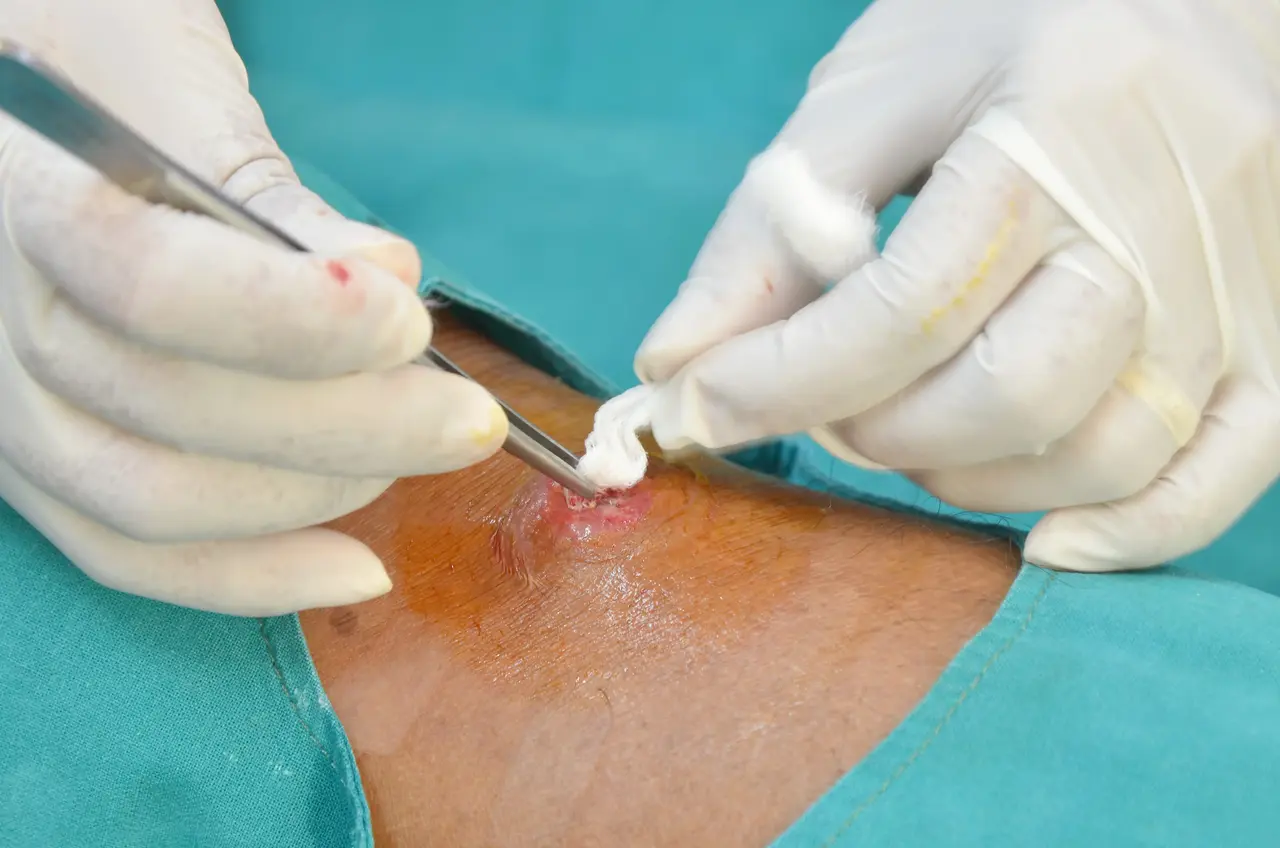There’s nothing pretty about pilonidal cysts, which are a type of boil that occur butt-cheek adjacent — most of the time right where the butt crack begins. If you’ve ever experienced one, you know that they’re extremely annoying, uncomfortable, and can even be downright painful. Perhaps it began as a little pimple near your tailbone. Perhaps it got red, swollen or started to drain. No matter how it made its appearance, odds are you have one big question on your mind: how do you get rid of it? The fact is, pilonidal cysts can really hang around, but with some good self-care and a little bit of professional help, there are treatments like pilonidal cyst removal surgery that can help and steps you can take to keep them from coming back.
Why does a person get a pilonidal cyst?
Before discussing how to get rid of a pilonidal cyst, it’s helpful to know what’s really going on here. A pilonidal cyst develops at the base of the tailbone, at the top of the buttocks. Typically it begins when hair and dead skin cells clog a hair follicle and form a small pocket. When that pocket becomes inflamed or infected, it can balloon with swelling, feel painfully tender and occasionally even drain pus or blood.
It’s more prevalent in younger individuals, particularly those who have to sit for long stretches or who have a lot of coarse hair in that area. But anyone under the age of 70 can have one, and once you’ve had one, you’re at greater risk of having another unless you treat it correctly.
Do pilonidal cysts go away by themselves?
Let’s be honest — sometimes the swelling goes away, and the pain subsides. You might think it’s gone. But unless the cyst has fully drained and healed (that often takes a prescription), it will still be there, just somewhat less deep. For many, the cyst “comes back,” often worse than the last.
If your cyst is not infected and is merely a small lump, warm compresses and good hygiene may be enough to keep it in check. But if it begins to hurt, swell or drain, it’s time to do something about it. The sooner you catch it, the more likely it is to be fully treatable.”
What are the first steps to managing a pilonidal cyst?
If your pilonidal cyst is painful, one of the first things you can do is use a warm compress on the area. This can also help to decrease inflammation and may even promote drainage of the cyst. “Warm bath (yes, you read that right, a soak) can also help,” he says.
That said, these are nothing more than stopgaps rather than long-term solutions. Infection often leads to the cyst requiring medical treatment. It may sound frightening, but the good news is that it’s usually a quick, easy fix.
When should I go to the doctor for a pilonidal cyst?
If the area feels painful, looks red or starts draining pus, it’s time to call a health care provider. By now the cyst is most likely infected, and you’re going to likely need some help to get rid of it. For the most part doctors will recommend a technique known as incision and drainage. It’s a very minor operation where they open up the cyst and clean out all the infected stuff.
This is often performed in the doctor’s office under a local anesthetic. You’re in and out the same day and the relief after is often immediate. It’s not sexy, but it gets the job done.
What if your cyst recurs?
Others have the misfortune of suffering from frequent pilonidal cysts. These are the cysts that refuse to stay away, even when they are drained. In such cases, your doctor may suggest surgically removing the entire cyst and any sinuses that may accompany it. It’s a little more intensive, but is a better shot at long-term healing.
The recovery from the surgery can be a little longer, depending on what kind of surgery it is, but many people think that’s worth it to be done with chronic cysts at last. Surgeons sometimes will leave the wound open to heal from the inside out, as this can reduce the risk of another infection. Others might use stitches or a flap technique based on your specific scenario.
Is there anything you can do so you don’t get another cyst?
Once you’ve been through a pilonidal cyst, the last thing you want is a second act. Prevention, then, boils down to keeping the area clean, dry and hairless. Some doctors recommend hair shaving or hair removal creams. Some even recommend laser hair removal, for results long term.
It is also a good idea to avoid sitting for long periods, if possible, when sitting on hard surfaces. Breathable clothes and hygiene play a part! If you are prone to sweating or irritation in this location, you can try powder to cut down on moisture.
Is there a complete remediation for pilonidal cyst?
Surgical enucleation is deemed in most cases as the nearest to a cure. That said, every individual’s body is different, and some may continue to get flare-ups, even after the surgery. But for most patients, appropriate pilonidal cyst treatment and follow-up care can substantially lower the risk of a cyst returning.
It’s because of managing the drivers. If hair and bacteria continue to accumulate in the same place over and over, the issue will more likely be recurrent. That’s why your doctor probably prescribes a mix of treatment plus changes in how you live to keep things under control.

What is recovery after treatment like?
The recovery rate is based on the kind of pilonidal cyst antibiotic treatment you had for pilonidal cyst. If it’s an incision and drainage, you could be back to business as usual in a few days. You’ll have to keep the area clean and follow aftercare instructions about tending to the wound. If you’ve had surgery, healing may require several weeks and you may have follow-up appointments to assess how you’re doing.
While recovering, it’s essential not to put too much pressure on the area. That could involve periodically getting out of your chair, sitting on a cushion or sleeping on your side or stomach. Obey your doctor’s orders and don’t slack off on wound care (it’s very important for healing).
Conclusion
It’s also not always a one-time-and-done situation to eliminate a pilonidal cyst, but many people manage to with the right approach. From taking a warm soak to a basic drainage procedure to surgery, relief is available. That’s not to say that you should just ignore it — because with reasonable care and a bit of patience, you definitely can put that pain in the rearview.



